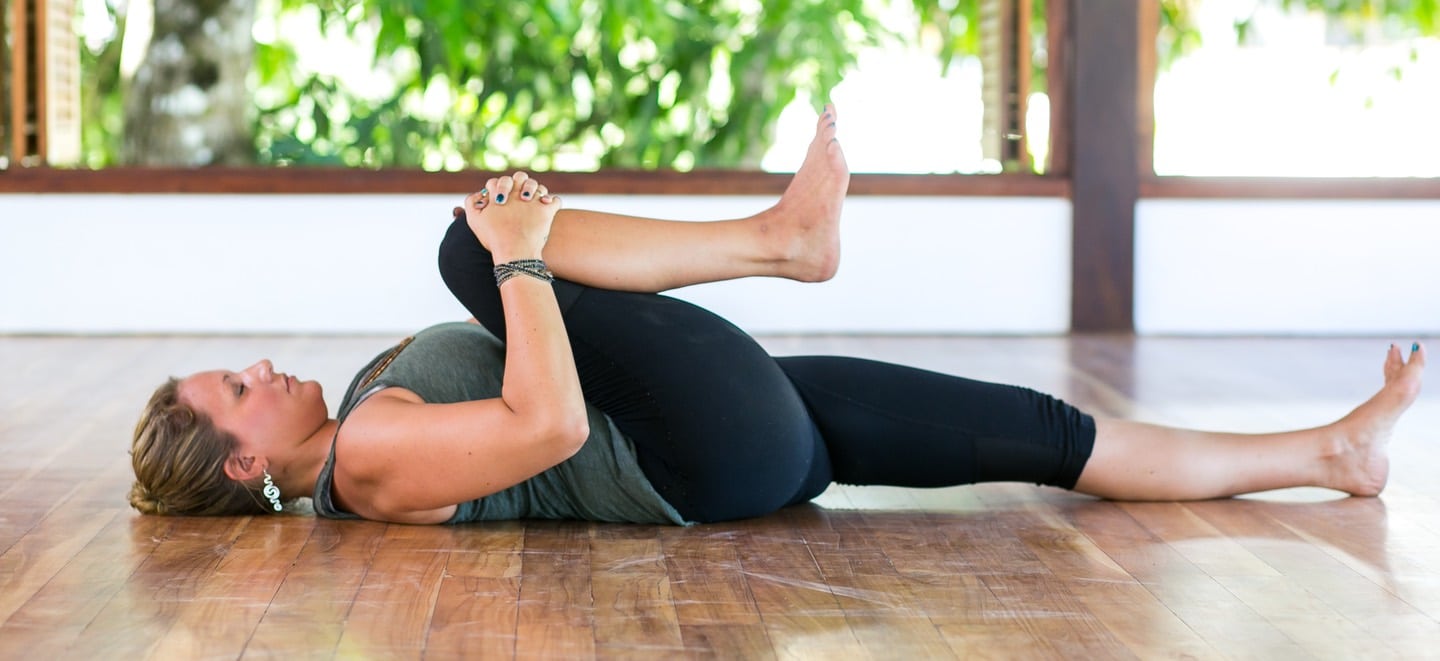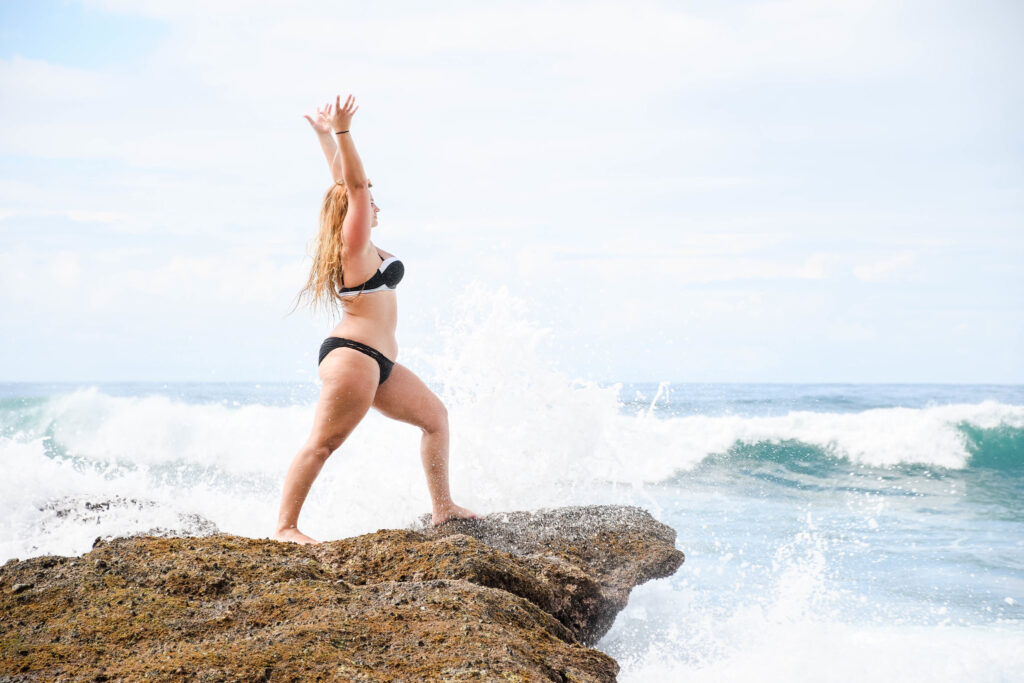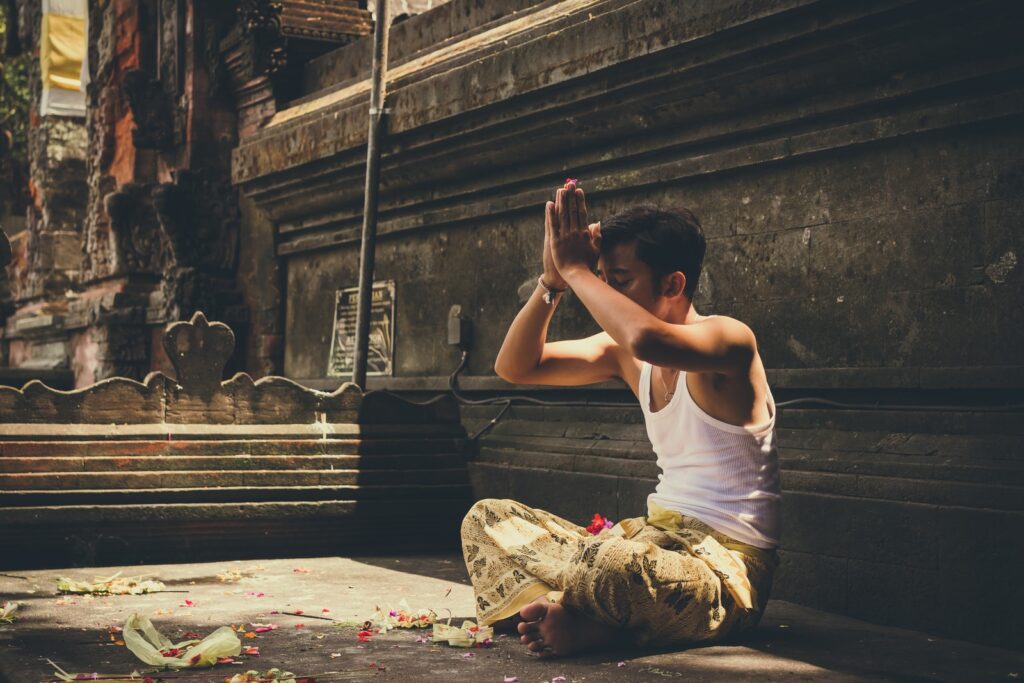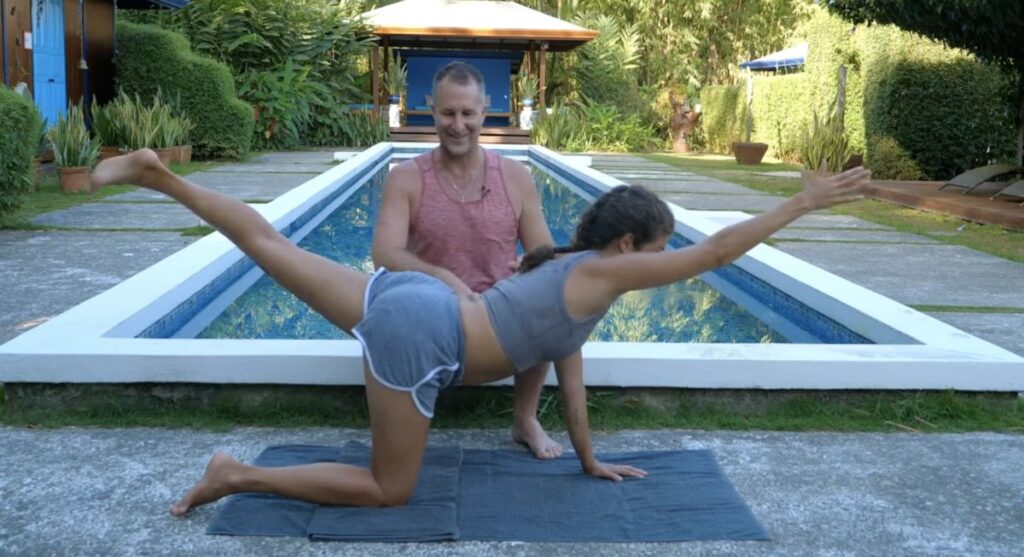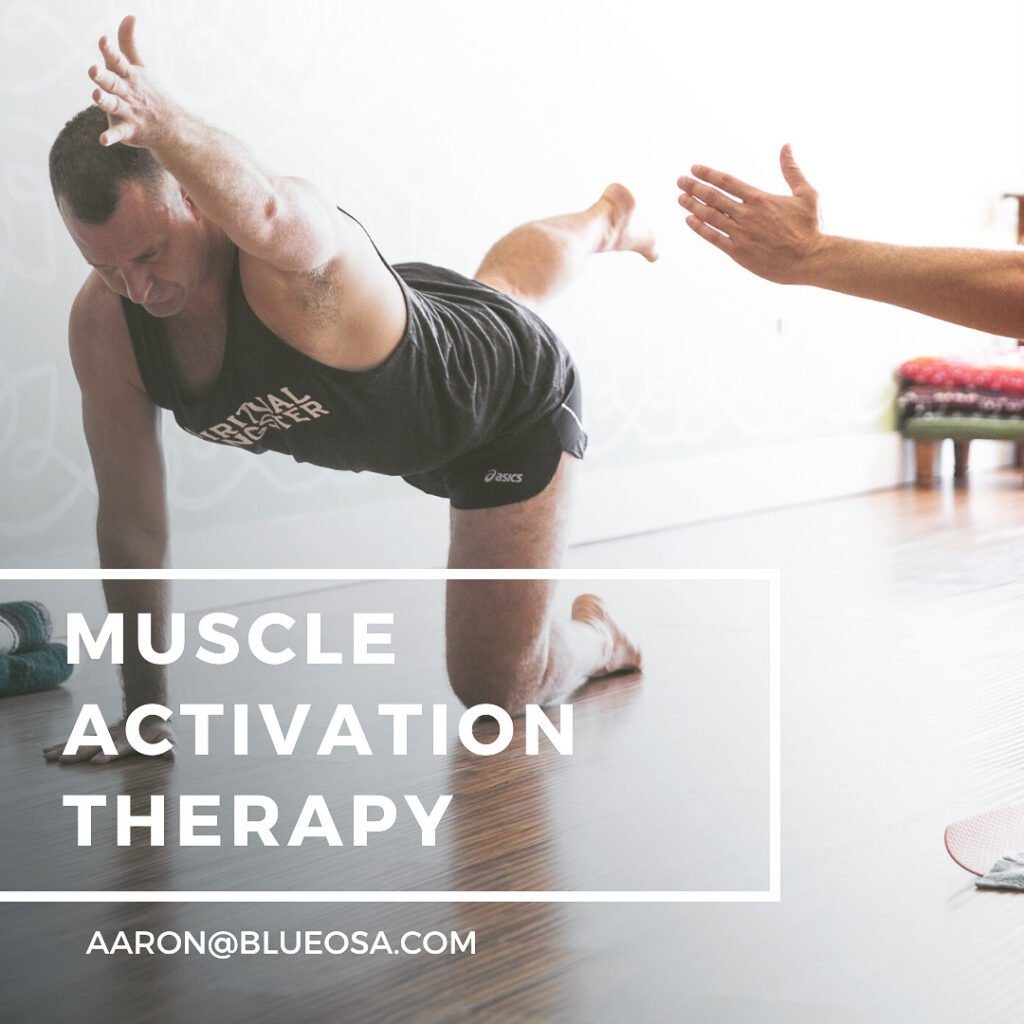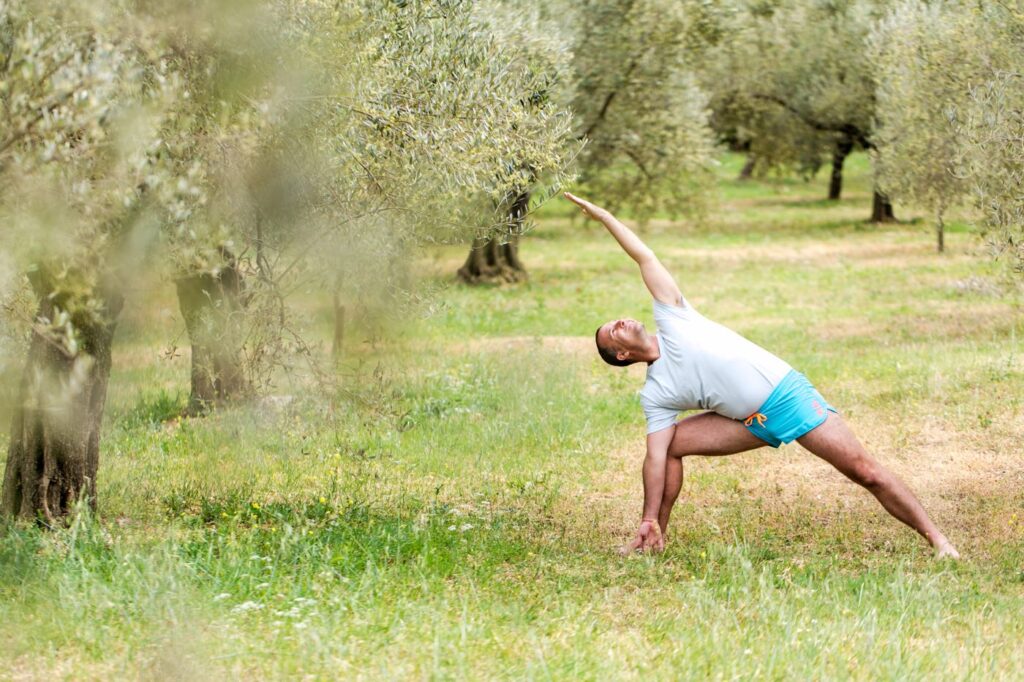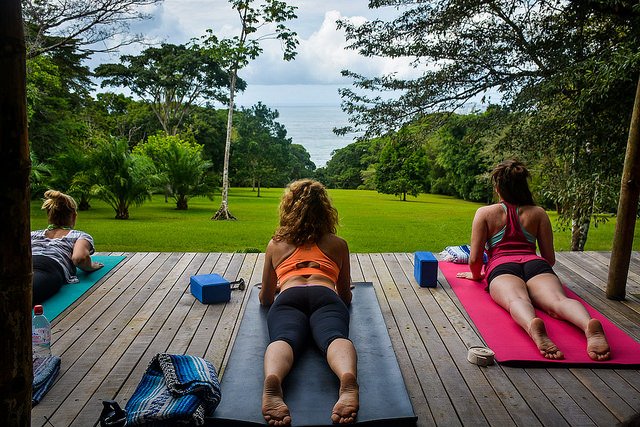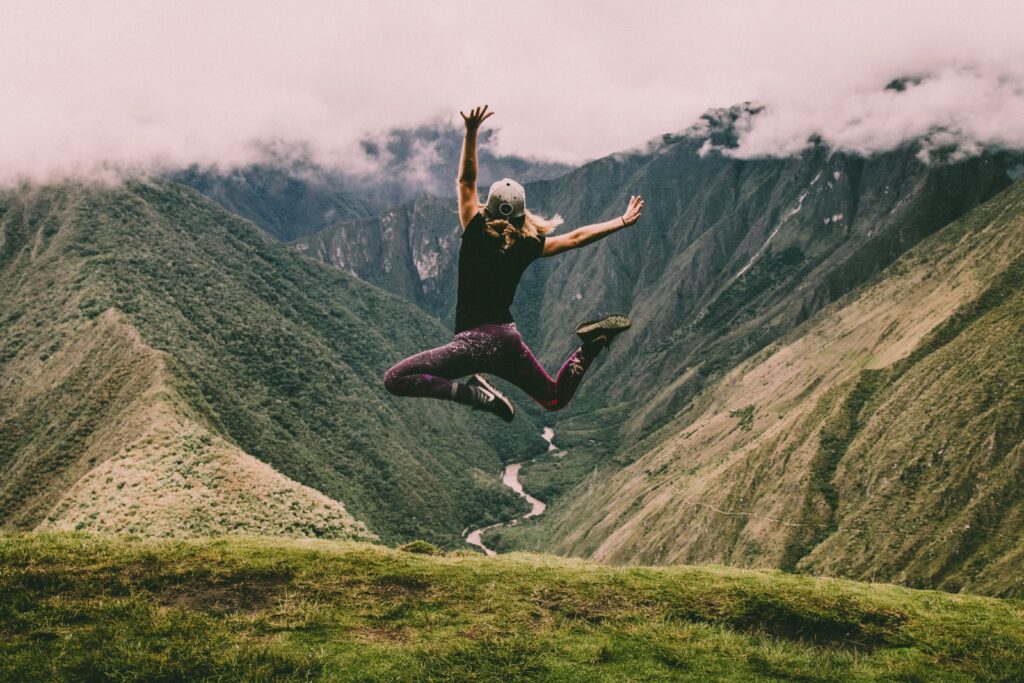Have you ever been in Pigeon Pose and found yourself wondering…
…how long do you hold a yoga pose, anyway?
Whether you’re a yoga beginner or simply trying to kick-off an at-home yoga practice, you’re certainly not the first to ask this question.
There’s only one problem:
There isn’t a right or wrong answer for how long to hold a yoga pose.
Just as your body is unique, so too is your yoga practice; what works for me might not work for you. That’s exactly why our guests love our private beach yoga retreats so much — we cater time in each yoga pose to your goals and needs. Plus, there are pros and cons to holding yoga poses for longer and shorter lengths.
So, what’s an aspiring yogi to do?
In this article, I’ll walk you through the benefits of holding yoga poses for various lengths of time, so you can find what works for you.
We’ll also explore different yoga styles, so you better understand what to expect from each type of yoga class. Let’s get started.
How do we measure time in each yoga pose?
Before we dive into how long to hold a yoga pose, it’s important to note how we measure the length of time in each posture.
As with all aspects of yoga, it comes back to the breath.
You might have heard the famous saying, “If you can breathe, you can practice yoga.”
It’s true. Yoga has nothing to do with flexibility — and don’t even get me started on the dangers of stretching.
So, with this connection to breath in mind, it makes sense that we typically measure the amount of time in each yoga posture by the number of inhales and exhales.
For example, a yoga instructor might say, “Hold plank pose for five breaths.”
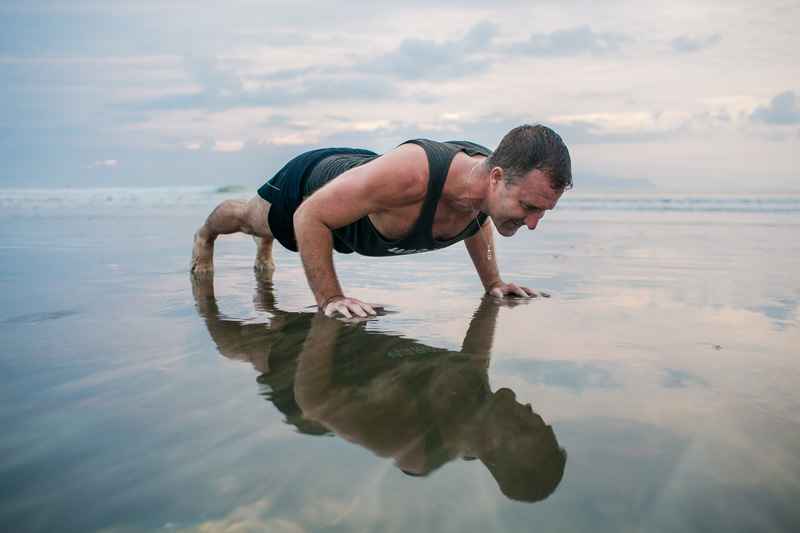
On the other hand, a fitness teacher would likely prompt you to hold a plank for a length of time, like 20 seconds.
Measuring how long to hold a yoga pose based on the number of breaths helps you stay connected to your inhale and exhale so you can reap the total mind-body-soul benefits of the practice.
Because the breath should lead your transition into each posture, I don’t recommend holding a yoga pose for any less than one inhale or exhale.
So, the short answer to how long do you hold a yoga pose? At least one breath.
Now, let me say this:
If you’re practicing a very slow style of yoga (like Restorative), you’re likely to hold postures for up to five or even ten minutes. In this case, the amount of time in each pose is measured in time, as it’s simply too long to count the breaths.
Pro yoga tip:
If you find yourself getting winded, it’s always a good idea to slow down and reconnect to your breath.
Now that we know how to measure the amount of time in each pose let’s take a deeper look at the all-important question: How long do you hold a yoga pose?
First — set your intention
Have you ever had a yoga teacher encourage you to set an intention at the start of class?
It’s a powerful practice that can help you reconnect to your soul’s purpose as you take your yoga off the mat and into day-to-day life.
However, it’s also worth noting that setting an intention for your yoga practice can be extremely practical — and that’s a very good thing.
Different types of yoga offer unique benefits. A Vinyasa Yoga Class (a faster-paced class) will be pretty different from a Yin Yoga Class (a slower-paced class.)
One style is not better than the other, but your individual goals will determine the suitable class and length of time in each pose for you.
For example, do you want to:
- Restore your mind and body after a particularly daunting workweek?
- Get the breath flowing for energy and clarity?
- Build cardiovascular fitness?
- Wind-down and relax before bed?
- Get a good sweat on and release that which doesn’t serve you?
Generally speaking, slower yoga flows are relaxing and therapeutic. Fast-moving yoga flows are energizing and heart-pumping.
Many yoga classes tend to lie somewhere in the middle. You could start with invigorating sun salutations, matching each movement to one inhale, and one exhale. Then, you might hold each additional yoga pose for 3 – 5 breaths, so there’s time to explore the full expression of the pose.
When answering how long to hold a yoga pose, here’s my go-to practice:
I prefer to warm up the joints and muscles with energizing Applied Yoga Anatomy + Muscle Activation™ practices. Then, I hold each yoga pose for a minimum of 3 inhales and exhales. This gives me time to work with my breath and move deeper into the postures while cultivating focus and presence.
What works for me might not work for you. That’s okay!
When you set intentions that make sense for you and your goals, you’ll better determine how long to hold a yoga pose in your practice on a day-to-day basis.
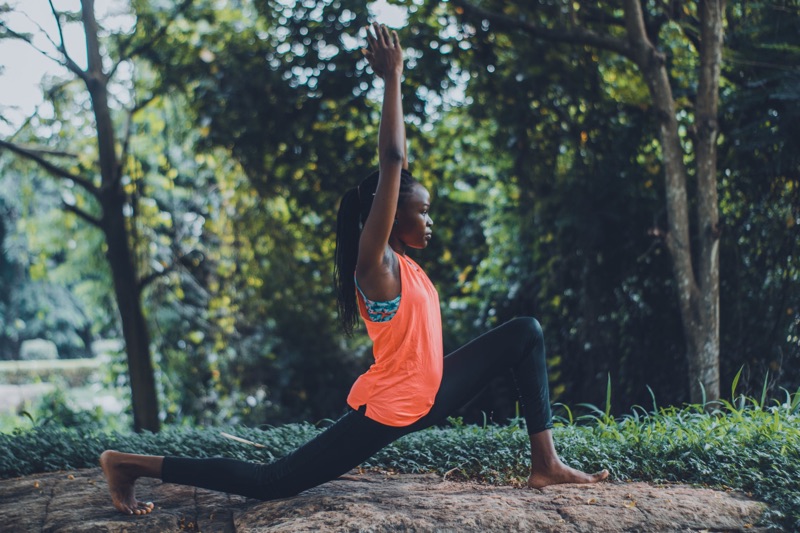
How long do you hold a yoga pose?
Let’s further explore the benefits of holding yoga poses for various lengths of time.
Benefits of holding a yoga pose for a short length of time (1 – 2 breaths)
- Increases the heart rate and improves cardiovascular fitness
- Gets the energy and breath flowing through the body to warm up joints and muscles
- Builds fitness and stamina
- Stimulates the sympathetic nervous system, which improves energy levels
- Calms the mind; Energizing, fast-moving yoga flows can become a powerful, moving meditation to get you out of your brain and into your body
Think about a Sun Salutation for a moment or some type of vinyasa. As you link breath to movement, you build fire in the body — and likely experience many of the benefits listed above.
Benefits of holding a yoga pose for a medium length of time (3 – 5 breaths)
- Strengthens and activates muscles
- Improves stability and balance
- Builds mental stamina and focus
- Promotes proper alignment
- Gives you time to use the breath to move deeper into postures, exploring variations until you move into the full expression of the pose
It’s not always easy to hold yoga poses for 3 – 5 breaths. Our minds start to wander. Emotions rise to the surface. Our muscles might even begin to shake.
But it’s often in the midst of these challenges that we grow the most. As always, the key is listening to your body, so you understand the difference between pain and discomfort. Use this as your guiding star when answering: How long do you hold a yoga pose?
Benefits of holding a yoga pose for an extended length of time (1 minute +)
- Relieves muscle tension and tightness to improve mobility
- Relaxes the mind and body
- Balances the nervous system
- Alleviates stress and fatigue to prevent burn-out
If the idea of holding a yoga pose for five minutes sounds torturous, then a Yin or Restorative yoga class might be exactly what the doctor ordered.
In our hustle culture, most of us are in a constant state of fight or flight — it’s hardly any wonder we suffer from chronic disease, fatigue, and burn-out!
Want to give a restorative yoga class a try? Hop over to this yoga practice for stress and fatigue.
There’s magic in constructive rest. However, if you find your mind racing as you hold a yoga pose for minutes on end, don’t worry — that’s perfectly normal! With continued practice, your thoughts will slow, and you might even leave your mat feeling grounded and, as the name suggests, restored.
Questions to ask before beginning your yoga practice
Just as your intention for your yoga class will inform how long should you hold a yoga pose, so too will these questions:
How are you feeling?
Tune in to your mind and body. How do you feel today? Are you tired and stressed or energized and focused? Do you need to cultivate energy or unwind and calm down? Where do you notice tightness and soreness?
Listen to what your body needs on any given day — and don’t be afraid to slow down or speed up if that’s what you need (even if it’s not what you want.)
Do you have any injuries?
For both faster and slower-paced classes, it’s crucial to be aware of any injuries so you can make necessary modifications. “Stretching out” injuries is not the answer. However, sometimes holding certain poses for more extended periods can reduce tightness and improve mobility.
Whether or not you’re dealing with an injury, I highly recommend reading my deep-dive on Applied Yoga Anatomy and Muscle Activation. It’s a game-changer if you want to cure physical pain and build a strong and stable body.
How much time do you have?
Sometimes, practicality reigns supreme. If you’ve only got a few minutes, don’t let that stop you from getting a quick flow into your schedule. Holding a few poses for a couple of breaths is better than not practicing yoga at all. You can always plan for that 90-minute slow flow on Friday evening.
Types of yoga and their typical hold times
Now you’ve got a solid understanding of how to answer, “How long do you hold a yoga pose?” So, let’s summarize some of the main types of yoga and their typical hold times.
Note: Each instructor is different — and so, too, are their classes. Use these hold times as guidelines, not hard and fast rules.
- Applied Yoga Anatomy + Muscle Activation™: Hold each pose for 6 seconds, and repeat 6 times.
- Ashtanga Yoga: Hold each pose for 5 – 10 breaths
- Iyengar Yoga: Hold each pose for 1 – 5 minutes
- Vinyasa Yoga: Link movement to breath; hold each pose for 1 – 5 breaths
- Yin Yoga + Restorative Yoga: Hold each pose for 1 – 20 minutes
- Power Yoga: Hold each pose for 1 – 5 breaths
To sum up: How long do you hold a yoga pose?
When in doubt, hold each yoga pose for at least 2 – 3 breaths. If you lose connection to the breath, slow down. Hold each pose for a minimum of one inhale or exhale.
As with all things in yoga, do what feels right for you. Tune in to what your mind and body need, then speed up or slow down accordingly.
Listen…
…if you’re Googling how long should you hold a yoga pose, chances are you’re ready for a rock-solid yoga practice — and the foundation to a happier, healthier you.
That’s exactly why we created our beach yoga retreats.
Imagine waking to the sound of gentle lapping waves as monkeys and exotic birds call out from the lush surrounding jungle. Freshly brewed Costa Rican coffee wafts from the kitchen, where an array of tropical fruits await.
Your private yoga instructor meets you in our ocean-view yoga studio, where you get one-on-one instruction to create a yoga practice that works for you. No matter your level, you get the guidance you need for a yoga practice you can come back to time and time again — no matter what life throws your way.
After a delicious farm-to-table lunch, you while away a sun-dappled afternoon in our chlorine-free pool. Or, perhaps you set off for an adventure at a hidden waterfall or world-class surf break. The choice is entirely yours because this is your private yoga retreat.
If you’re ready to heal your mind, body, and soul while strengthening your yoga practice into a life-long tool, we’d love to welcome you to our private oasis.
About Yogi Aaron
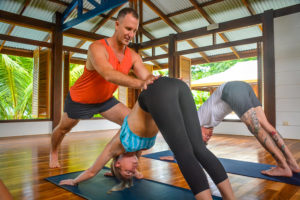
Yogi Aaron is the owner, operator, and lead yoga facilitator at Blue Osa and of the yoga teacher trainings.
Creator of Applied Yoga Anatomy + Muscle Activation™ Yogi Aaron brings three decades’ worth of study, mentorship, and experience into his teachings, with a strong emphasis on yoga therapy and alignment.
The Muscle Activation Yoga Classes is an exploration into your body, its muscles, and to learn how to improve its function through using Applied Yoga Anatomy + Muscle Activation™.
Find out more about yoga teacher trainings with Yogi Aaron at Blue Osa Yoga Retreat + Spa.


